SantaMonica
Well-known member
12 degree optics
120 degree optics
12 degree optics
1) revisit the sizing guideline per feeding. Estimate how many cubes/day you are feeding. Calculate the appropriate screen size based on that, then double it. That is the largest screen you should really need. Based on your last post, I would estimate between 4-6 cubes/day is what you're feeding, so a 10 cube/day screen should be more that adequate. 120 sq in. I have 5 tangs so add a sheet of 8" x 14" nori 5 days a week. I am now thinking 2 x 10" x 10" Plastic mesh would suffice....I am reading your new summary.
2) Algae scrubbers are not a quick fix, if "quick" means "right now, I'm losing my corals". you don't have time for an algae scrubber to fix that if that is happening right now. This is a long term solution. You need to build the scrubber, yes, but you also need to address the immediate situation which means you are probably going to have to do a series of PWCs, starting now. I have doubled my water changes and I change my GFO/Carbon weekly since I noticed this problem...that's how I got the phosphates down to .5, which isn't low enough.
3) 3ppm nitrates is nothing to worry about. Nothing. don't even concern yourself with 3ppm. Phosphate a 0.5 ppm, this is probably your biggest problem and could be the reason your corals are declining. The only way to get these down quickly is large PWCs and GFO. I would run Phos-Blast from Premium Aquatics instead of GFO. It is exactly the same as RowaPHOS. The only thing that is better (and not my much) is GFH (granulated ferric hydroxide) which is BRS's "high capacity GFO". Phos-Blast / RowaPHOS is good stuff. I am running the standard BRS GFO.
4) you may end up going through a 'clean-up' stage if you have left your tank at high nutrient conditions for a while. This means that once the scrubber gets cured, and starts to really suck down the nutrients, another mechanism (not 100% clear what it is, but it appears to be chemical + bacterial action) can cause the release of bound waste from the rocks and sand. This means that you might get some algae and/or cyanobacteria outbreaks, but it will pass (how long depends on how dirty your tank is) and your system will be much healthier in the end. I am experiencing cyano outbreaks right now....my tank has been running for 2 years now and this just started happening about 2 months ago...it started when all of my GSP shut down and then began to melt away.
5) For LED lamps like the one you are referring to, I would recommend 12 degree optics Do you mean 120 degree optics?which will allow a wider spread and allow you to put the light closer without burning. Then remove the optics from the blues when you get it so that the blues are very spread out - you don't need much. Verify with the manufacture that this (removing lenses) will not cause the lamp to stop working. I could use the spiral bulbs if that is a better choice.
6) if screen is 120 sq in, then you need 60W of CFL per side for normal light, 120 for high light. I think that when I take the nori into account this will be too small. If I go with the 2 x 100 sq in then I guess the 60w per side would still work...Do they sell a 60 watt CFL bulb?
Wow....I should have waited before I jumped in and starting building this....alot more involved then I first thought.....I need to finish reading your new basics summary and re-check calculations (besides bringing back some stuff to Home Depot).
You also have other filtration in place, and if everything were rated according to feeding (which really does make the most sense) then this would be much easier. But if you figure in the skimmer as taking up part of the load, and the GFO and carbon another part, then you can reduce the size of the scrubber to one that is more manageable. Also remember that the guidelines are exactly that - a guide. The feeding based guideline was arrived at based on some trial and error and really has not been through a rigorous scientific process, but it does seem to be generally accurate within reason. Where it starts to go out of whack is on the high and low ends of the scales. So if you're feeding 1/4 cube/day, a 3 sq in screen is pretty ridiculous. Equally out whack are extremely large screens. You are on that end. So I still stand by my thinking that a single 10x10 screen is going to get you a long way towards your goal, and 2 of them is overkill. IMO.
You are going to have to keep up that regimen. There is some evidence that points to an algae scrubber not being optimally effective in a high nutrient system. But if maintained right, it becomes very effective in keeping nutrients low once they are there - very effective.
switch to the phos-blast or high capacity GFO (GFH)
This sounds like long term overfeeding and lack of maintenance. The rock becomes a nutrient sink and when it can't handle anymore, your readings start to spike. Cut your feeding way back. Most fish can go 3 days without food. I feed sometimes every day, but a lot of the times, every other day. Do this at least temporarily until you get things under control. This would also coincide with your smaller (single 100 sq in) screen that is now more appropriately sized for your feeding. Your fish will survive with less food. Your tank will not (or at least your budget will not, having to do all those PWCs)
More lower wattage CFLs are better than one big one, because the one big one will have a big hotspot in the middle, and is harder to direct. Smaller ones can be closer.
And yes 120 degree optics
Cut the nori back to 1/2 along with the rest of your feeding.
Good thing Home Depot has a liberal return policy!
This is an ATS I built as a test bed. It sat across the top of a 55g. It was LED powered and used a heavily corrugated acrylic sheet as the screen.
.
.
.
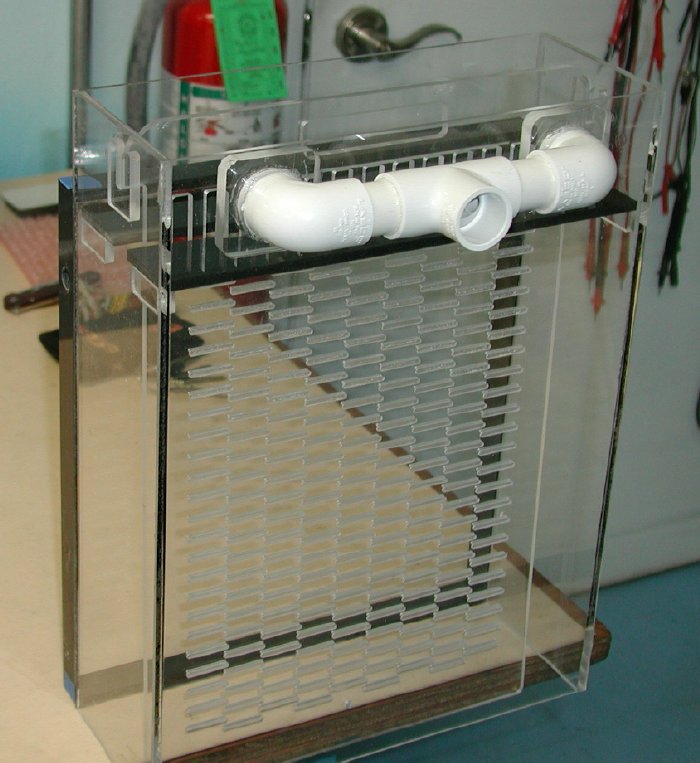
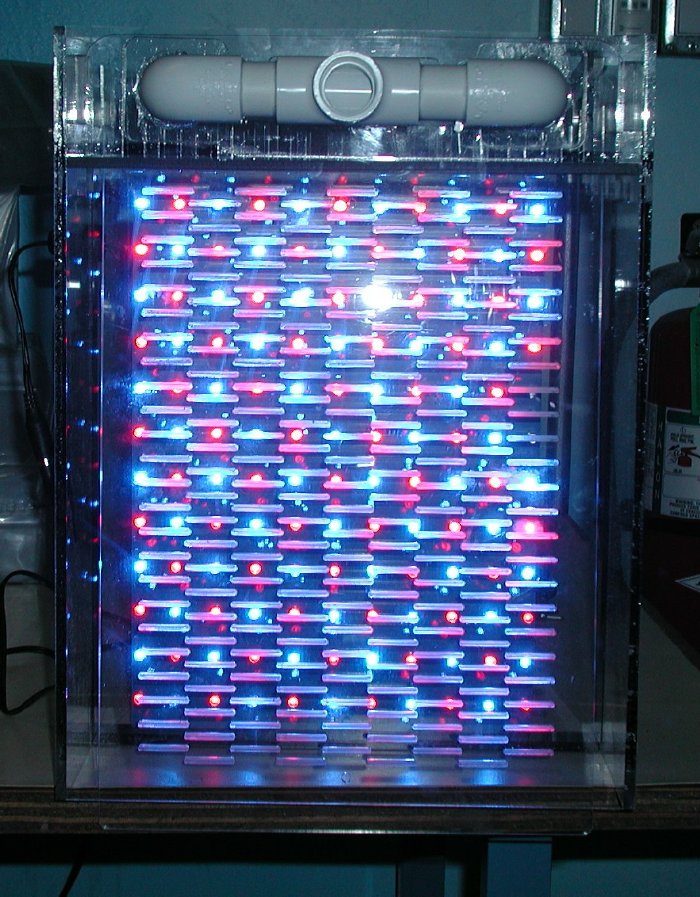
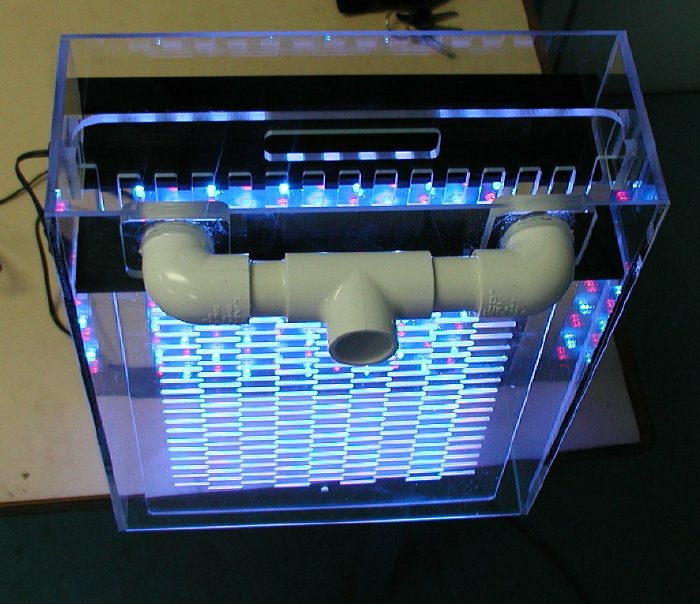
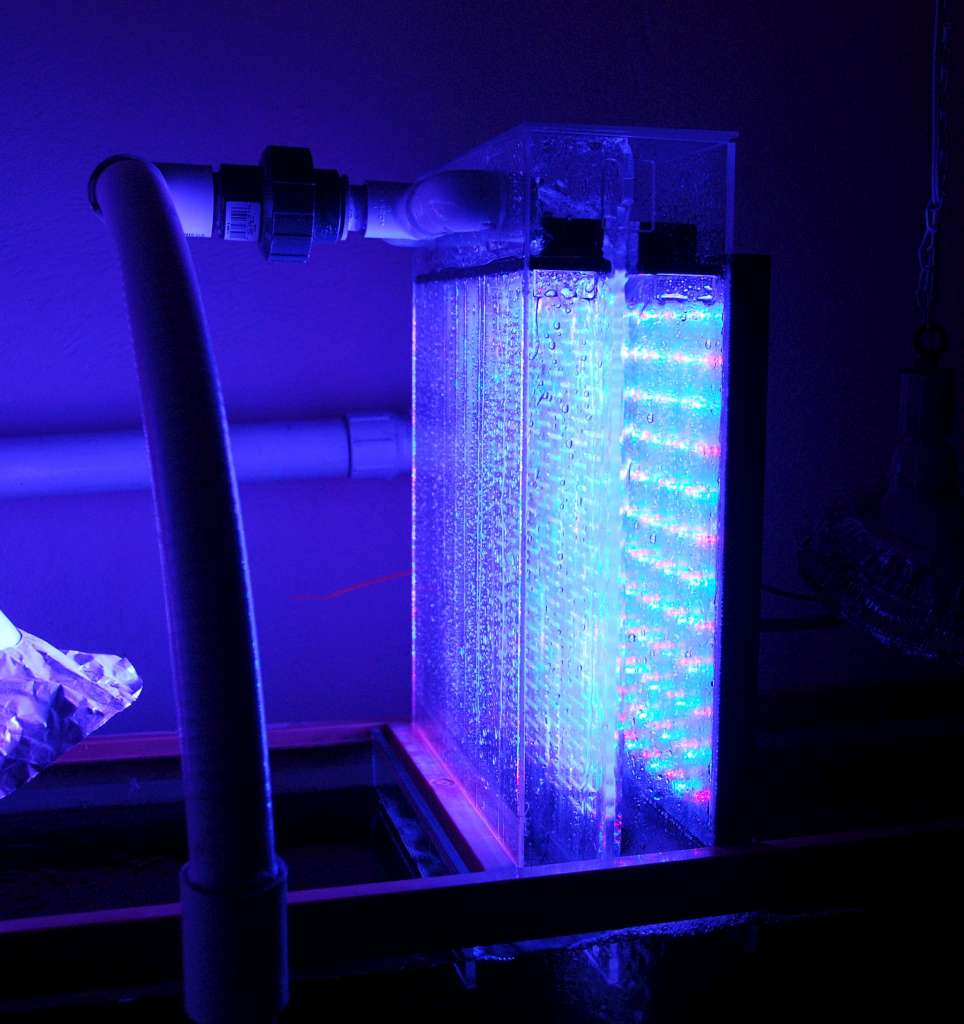
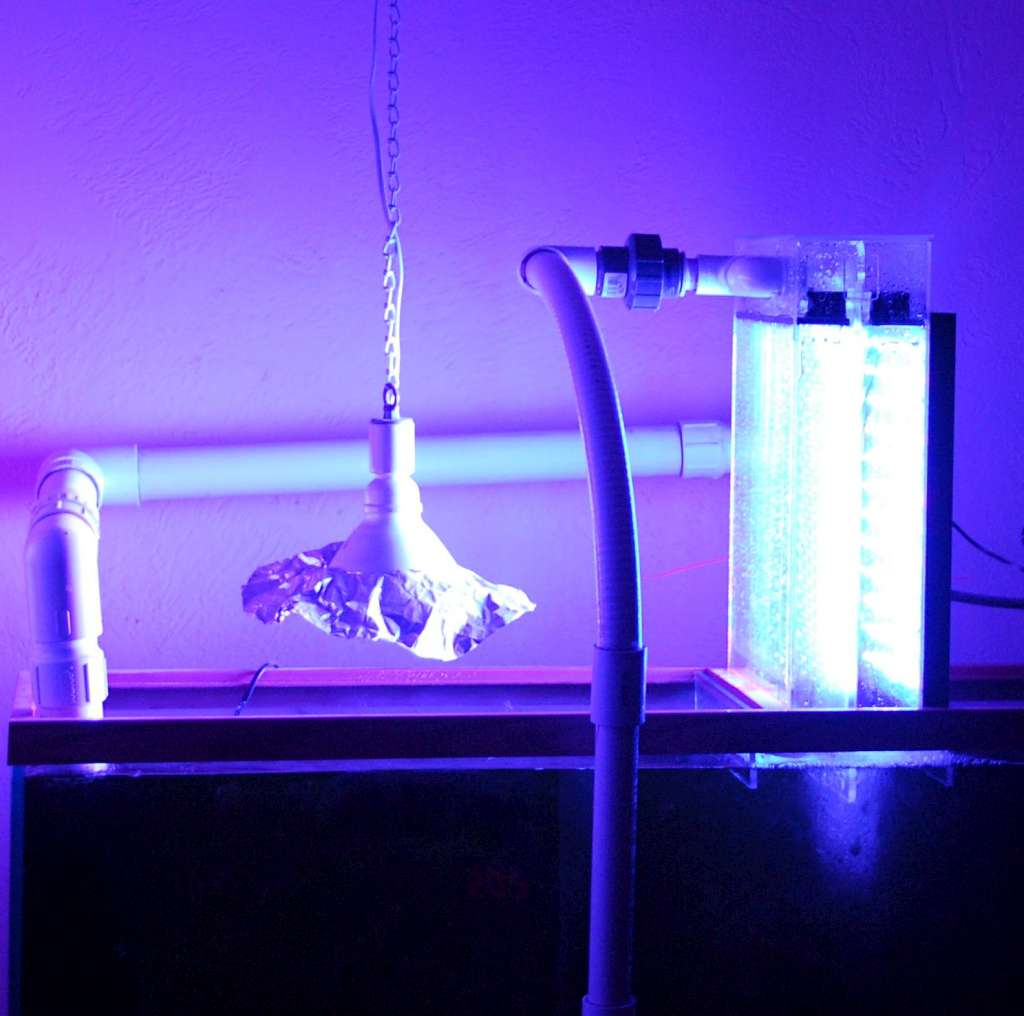
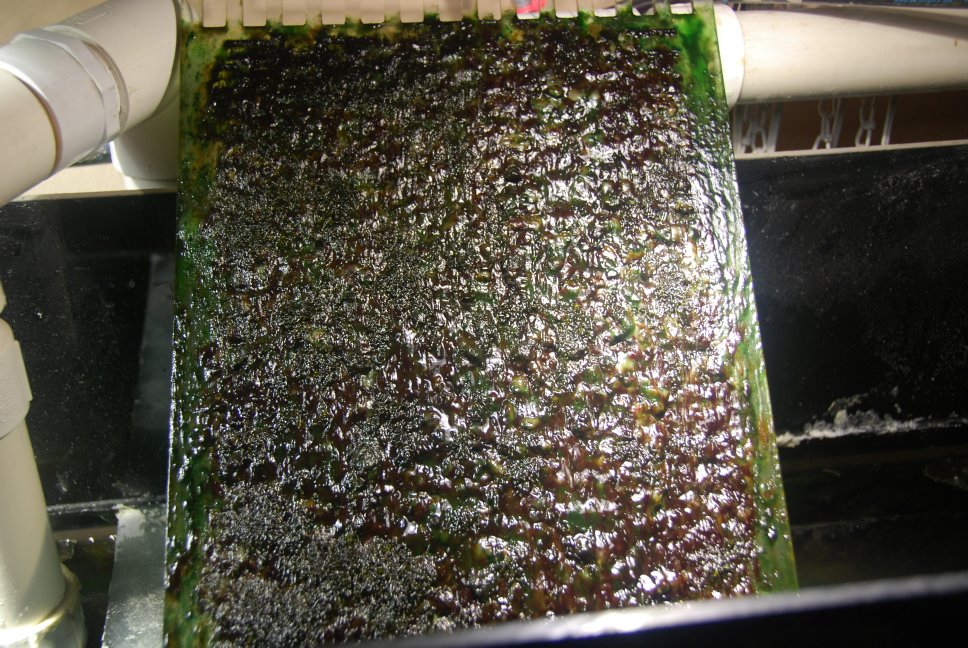
I thought I could get better growth if I reddened the light so I did. I think it helped a little.
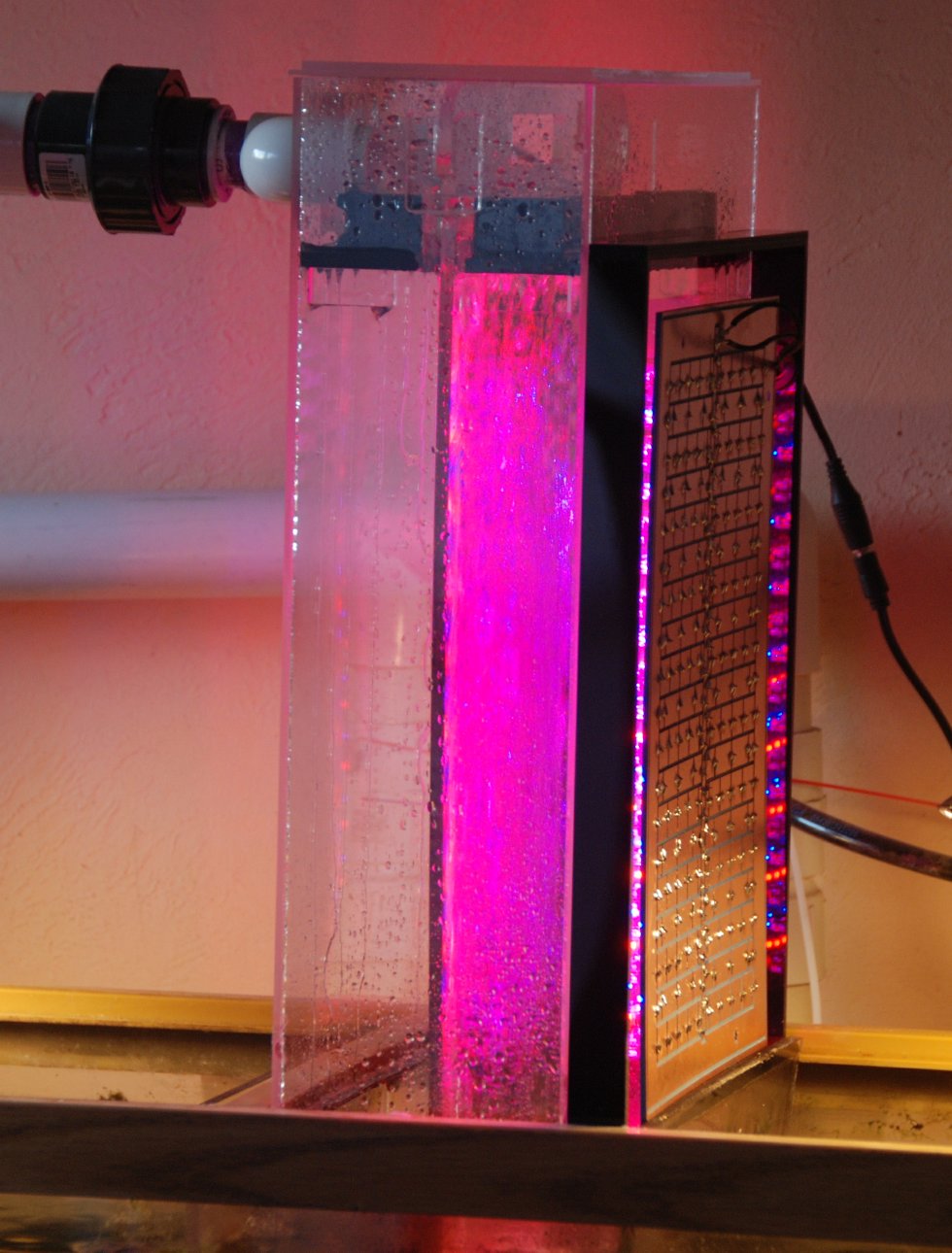
Summary.
1) The acrylic screen was too smooth and could never be made rough enough.
2) These super bright LEDs were not super enough. You'd need HBLEDs to really make it crank.
3) My water distribution at the top had too many dribble and leak issues that caused water to go places it shouldn't - like down the front window where algae would grow.
4) This was before we realized that you need an ATS big enough or it will never convert to the light green efficient algae. Exacerbating this was the fact that my tank was running a little over 1,100ppm nitrate.
I subsequently converted it to horizontal and learned even more about the issues of horizontals.
I want to personally thank you for taking the time not only in writing this whole algae scrubber basics thread and then revised version... but also in taking the time to respond to me and my specific issues.
I read through your revisions and have decided to take your advice (both above, regarding the screen size, and on going with LED lighting). That being said, I really don't want to build a diy LED board....I have purchased lights from E-shine in the past, (I have a 150 watt Cree fixture from them that lights my 20 gal frag tank). W/out consideration to price and based on your one 3 watt LED per 12 sq in of screen.....do you think the Eshine 50 watt per side is too much for a 10"x10" screen?
The other option is the 3 watt LED bulbs on ebay like this:
http://www.ebay.com/itm/12RED-6BLUE...d=100011&prg=1005&rk=2&rkt=5&sd=171140238983&
This model is 54 watts (18LEDs) but they also make 21 watts and 27 watts and can make them with ALL 120 degree lenses and either ALL red 660nm or any combo that you want. Based on a 10" x 10" screen I would think the 27 watt would be the closest fit to the formula requirement (100 sq ft / 12 = 8.3 x 3 watt LEDs)....I hesitate because on one hand I am afraid of the spread on the other hand if I went with the 54 watt it may be too much. What is your feeling? The next question is....if I use the clamp lights....would the reflector serve a purpose for this type of bulb?
thanks again,
Frank
I'm not sure where the formula 100/12=8.3 x 3W came from...that's mixing the feeding calculation and the wattage calculation somehow - not right.
I've been researching a bit on how many 3W LEDs you need to use. The general consensus at this point seems to be that you need one 3W LED on each side for every 15-20 square inches of screen. Going with the new feeding-based sizing guidelines, it seems that a simple technique would be to use one 3W LED on each side for every 12 square inches. So a 2-cube/day Algae Scrubber would need 4 3W LEDs, two on each side. Distance from the screen is something that depends on some factors, such as how hard the LEDs are being driven and how long of a photoperiod is used. New ground is being broken on this almost daily, and I am in the process of gathering as much information as I can from the DIYers so that some kind of "˜standard' can be established.
This is where I got the formula from but I think I may have neglected to take into consideration the # of cubes fed per day.
Thanks for all of your help....I think I will go with the ONE wider screen and 2x27 watt bulbs per side with only 1 blue LED each and 120 degree lenses.

I started up my DIY Waterfall ATS today to test the water flow. Left to right is working very well, but front to back isnt equal. Any ideas or is this ok as long the whole screen is covered?
